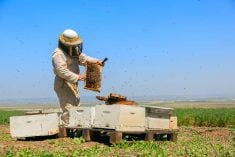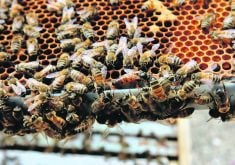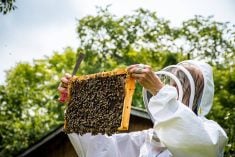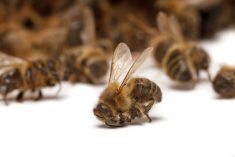Honeybees also suffer during smoky days.
In Manitoba and Saskatchewan, blanketed by air quality advisories for long stretches of the last few months, that’s been bad news for beekeepers.
“Once bees start getting a lot of fire smoke, they just kind of settle into their hive and they won’t go out,” said Simon Lalonde, president of the Saskatchewan Beekeepers Development Commission.
Read Also
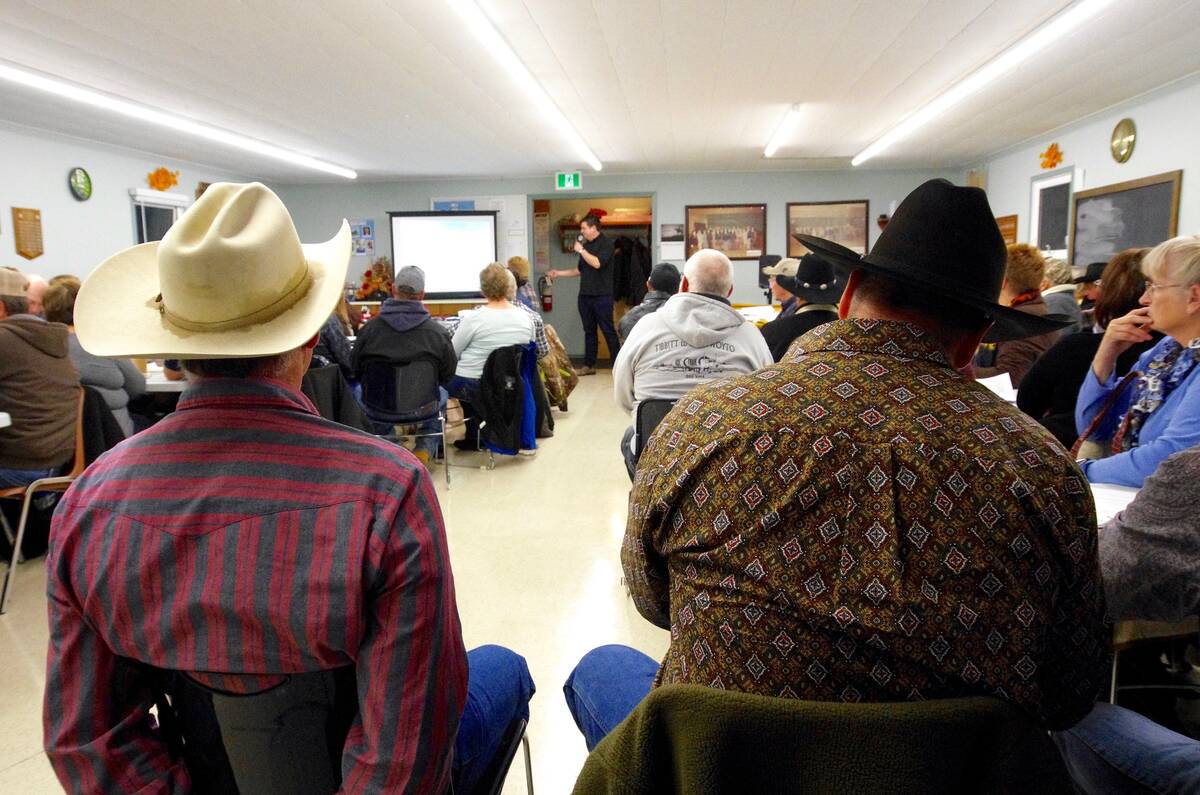
Don’t blow off that beef producer meeting
Local veterinarians and livestock experts often speak at beef producer group events. They have good advice for the farmer on vaccines, calving, beef herd management and more.
“They won’t forage for pollen … If you’re doing a queen breeding program, the queens won’t go through their mating flights because it’s too smoky out,” the Clavet-area beekeeper added.
WHY IT MATTERS: Heavy plumes of smoke bring health risks for farmers and livestock and can complicate everyday farm operations like spraying. Bees are among the livestock species potentially impacted during recent weeks of smoky skies.
Lalonde equated heavy smoke to a rainy day, without the benefit of rain.
“The bees are stuck inside doing nothing,” he said. “If there are too many of those days in a row, the queen will start shutting down some of her brood production and, ultimately, that’s not good for the bee population.”
Paul Gregory, vice-chair of the Manitoba Beekeepers Association, raises bees in the Interlake region of Manitoba.
“We’ve had some days in the last three weeks, like two or three days a week that the bees are just not foraging the same,” he said.
Bees are attuned to weather conditions, and having smoke in the ambient air around the hive can make the bees go into emergency mode.
“We’re not noticing the foraging activity on very smoky days,” he said.
He notices the impact in his feeding schedule. Bees in his area go after various types of local flowers and local fruit blossoms, like cranberry, but lack of foraging means he has to feed more sugar syrup to supplement his hives.
It could also result in less honey production for the year.
Bees start producing honey as soon as the snow melts and crocuses, dandelions and other crops start to emerge.
“They are always bringing in honey, but it’s only the surplus that we harvest,” Gregory noted.
That early honey production, prior to the surplus, goes to bolstering brood and building numbers.
Actual honey harvest usually begins in mid-July.
In some warm, wet springs, there may be enough honey from dandelions to create an early harvestable excess, the beekeeper added, but the reality this year has fallen far short.
The fires behind the smoke
Some of Manitoba’s thousands of fire evacuees have gotten the green light to head home in the second last week of June, but the province’s wildfire service was still battling 20 active fires June 17, several of which were large and still out of control.
The fire menacing the city of Flin Flon and a list of other communities in northwestern Manitoba had grown to 370,780 hectares. Other big out-of-control fires included a 70,820-hectare blaze by Lynn Lake and a 218,700-hectare fire in the eastern area around Nopiming Provincial Park, although evacuations had been lifted for the town of Bissett.
At one point in mid-June, the province reported that 21,000 Manitobans were out of their homes due to the widespread and dangerous fires.

Saskatchewan’s fire situation has also been grim this year. Fires were scattered across the northern half of the province as of June 17, also leading to thousands of evacuations.
Northeast Saskatchewan was hit hard by smoke. Fires had sparked straight north of Prince Albert and to the east, near Flin Flon, Man.
“I guess our biggest benefit, where we are, south of Saskatoon, is that those northwest winds are pushing the smoke away from us. They’re pushing it more towards Melfort and Tisdale, and those guys have had five or six bad days,” Lalonde said.
Manitoba, likewise, saw wide areas of prolonged heavy smoke, which led to the cancellation of several outdoor events and widespread health warnings.
Both Manitoba and Saskatchewan had a welcome break in the weather in mid-June with a stretch of colder temperatures and much-needed rain. About 10,300 Saskatchewan evacuees were allowed to return home, that province announced June 13.
Beekeeping threats mount
Lalonde said last winter was one of the toughest years for Saskatchewan beekeepers. There was more winterkill and more varroa mites.
The parasite has become a bane for beekeepers, weakening bees, transmitting disease and threatening the winter survival of colonies. Some people have lost all their hives because of the mites, said Gregory.
Beekeepers in Saskatchewan are trying to split their hives and make nukes to rebuild their hive numbers, according to Lalonde. He stopped short of raising general alarm about a bad season though.
“For some beekeepers, the smoke is slowing down some of their bee season and what the bees would normally be doing,” he said, but added that “We’re still probably early enough that they can recover from it. If we get good weather and a bit of rain, the bees might be able to catch up quite easily.”

One big issue, both this spring and the last few years, has been bears. Some parts of the province have seen larger bear populations.
“There’s a higher bear population up in the north, and then that puts pressure on the young bears and pushes them down south,” he said.
Many beekeepers are taking advantage of Saskatchewan’s bear fence funding program, he added.
Gergory is more than familiar with bears attacking his honey hives. The trees, rivers and lakes of his region make for good bear country as well. If he has a bee yard near a forest or a river, he puts up an electric fence.
Most of the interlopers, he noted, are “teenage bears” foraging and curious.
“We’ve had a couple bear hits,” he said.
The weather isn’t helping this year. In 2021, provincial officials noted in an interview with the Co-operator that drought was hindering the function of electric fences. The same is happening in Gregory’s bee yards this year.
“We’ve only had three-quarters of an inch of rain in the last month and a half,” he said. “If the ground is dry … your ground rod is not doing its job, because you have less of a current voltage going through the wires,” he said.
Some older bears will recognize the fence and stay away, but the same cannot be said for the youngsters.
Unlike past years though, Gregory is not dealing with a season where bears are driven to brave the fence out of a lack of berries.
“Sometimes, every third or fourth year, we get a late frost,” he said. “It kills the native berries and then the bears are starving and it creates a real issue, a real situation with the bears,” he said.






